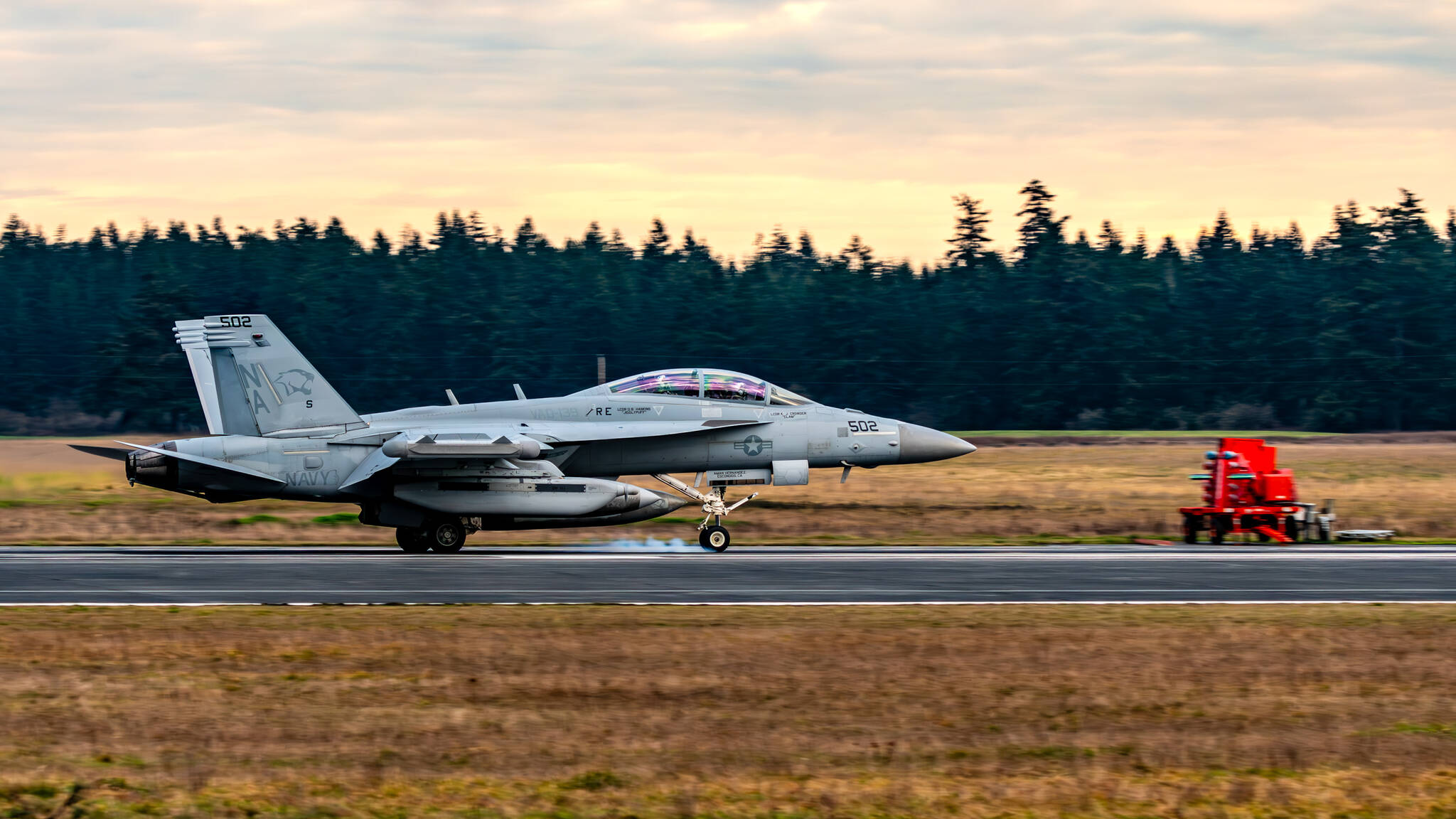A redo of parts of an environmental study of noise from military aircraft at Naval Air Station Whidbey Island appears unlikely to alter training frequency.
On Friday, the Navy released a draft amended analysis to the Environmental Impact Statement, or EIS, for Growler airfield operations at Ault Field and Outlying Field Coupeville. The new analysis largely comes to the same conclusions that previously supported an increase in the number of planes.
One of the major differences is an acknowledgement of the effect the noise from the aircraft have on childhood learning at two Whidbey Island elementary schools.
The document can be viewed online at www.nepa.navy.mil/growler or at libraries on Whidbey Island and surrounding communities.
The Navy is gathering comments about the draft, which can be submitted on the website, until April 28. In addition, the Navy is holding public meetings on April 1, 2 and 3.
U.S. District Court Judge Richard Jones ordered the Navy to redo sections of the EIS after the state Attorney General’s Office and the Coupeville anti-noise group, Citizens of Ebey’s Reserve, or COER, filed lawsuits in 2021 claiming that the environmental study was inadequate and ignored some evidence. After the original EIS was finalized, Navy brass chose an option that increased the number of Growlers at NAS Whidbey by 36 and resulted in a four-fold increase in touch-and-go training at OLF Coupeville.
The judge found that the EIS failed to quantify the impact of Growler noise on classroom learning; failed to disclose the basis for greenhouse gas emissions calculations; failed to take a hard look at species-specific impacts on birds; and failed to give detailed consideration of the idea of moving Growlers to El Centro, California.
Subsequently, the judge ordered the Navy to redo parts of the EIS but without vacatur. The judge agreed with the Navy that operations can continue at the current level while the study is being done in order to protect the electronic warfare mission deemed vital to national security.
Bob Wilbur of COER said the group is in the process of reading and analyzing the 74-page draft document.
“We are hoping to work with the Navy to accommodate some sort of relief,” he said.
The draft concludes that Growler operations show “potential impacts on childhood learning.” Specifically, students at both Crescent Harbor Elementary School on North Whidbey and Coupeville Elementary School on Central Whidbey may experience a one-month delay in reading comprehension because of noise exposure.
In addition, students exposed to the measurable increase in noise “could experience negative impacts to long-term memory, reading comprehension, mathematics test scores and failure rates.”
The study notes, however, that the schools impacted by the noise have maintained assessment scores within 1% below or above state scores. Crescent Harbor Elementary, which has the most impacts, has an English Language Arts score of 68.9% compared to the state average score of 70.8%. Coupeville Elementary and Oak Harbor High School, which also experiences noise, have scores above the state average.
Also, the impacts are partially mitigated by the Navy’s efforts to reduce operations during “key academic testing periods at schools,” the draft states.
The draft finds that the amount of greenhouse gas emissions is greater than previously calculated but would not result in any meaningful adverse impact on a global scale.
The draft also finds that the increased Growler operations will not likely result in significant adverse effects on state-listed endangered birds or their habitats.
“Stressors from the Preferred Alternative would be intermittent and brief and would not disturb normal breeding, feeding, and nesting behaviors of individuals to a degree that would cause significant effects on their populations,” the reports states.
Finally, the draft concludes that relocating Growlers to El Centro in California would degrade the electronic warfare community’s effectiveness. In addition, the move would have an impact in an area that already has substandard air quality and expose a greater number of people to poor air quality, the report states.
“This alternative is neither practical nor economically feasible and is contrary to the Navy’s fiscal stewardship responsibilities to the American public,” the draft states.
The Navy is holding the first in-person public meeting at 4-6 p.m. on April 1 at the Oak Harbor Elks Lodge at 155 NE Ernst Street. On April 2, a meeting will be 4-6 p.m. at the Whidbey Island Nordic Lodge at 63 Jacobs Road in Coupeville.
The Navy is also holding a virtual meeting 7-8 p.m. on April 3, featuring a presentation that will address questions submitted in advance. Questions can be emailed to growler_amended_analysis@us.navy.mil before 11:59 p.m. Pacific Time on Friday, March 21.



